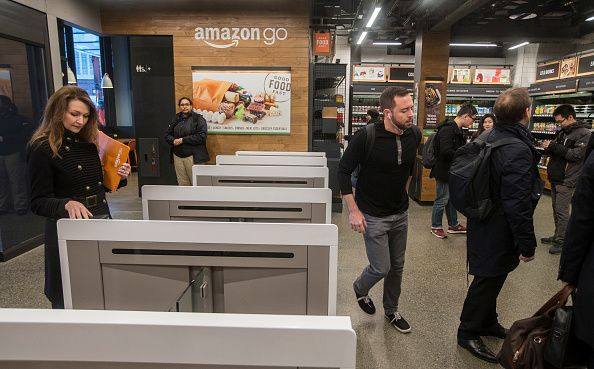Amazon Go Stores Could Be Incredibly Profitable

Amazon's (NASDAQ:AMZN) cashierless convenience stores are off to a good start. The company currently has nine Amazon Go locations across Seattle, Chicago, and San Francisco, with potential plans for about 2,991 more over the next couple years.
This article originally appeared in the Motley Fool.
Those stores aren't cheap. Amazon reportedly spent $1 million just installing hardware in its flagship Amazon Go location. But recent estimates of Amazon Go store sales combined with the potential long-term cost savings from the stores' technology means they could be incredibly profitable for Amazon.
As if people didn't shop at Amazon enough
Not only do people love shopping on Amazon.com, they're happy to spend more money at Amazon's physical locations as well.
Shoppers spend about 50% more, on average, at Amazon Go locations compared to typical convenience stores, according to an estimate from RBC Capital Markets analysts. The analysts counted an average of 550 customers per day at Amazon Go locations, translating into an estimated $1.5 million of revenue per year for each store. Based on National Association of Convenience Stores data, a regular convenience store of similar size would generate just over $1 million, the analysts say.
RBC's analysis may even be conservative. An analysis of sales from October by Brick Meets Click found the flagship Amazon Go store in Seattle generated $2,700 in annual sales per square foot. RBC's analysis estimates stores generate less than $1,300 per square foot, with larger stores increasingly less efficient.
In either case, the Amazon Go format is very efficient at driving sales. There are a couple reasons that come to mind.
First, Amazon can fully utilize its space for displaying merchandise. Other stores require a checkout counter and a place for customers to line up. That alone will increase sales per square foot.
Second, the convenience factor reduces the friction shoppers might experience in other store formats. Shopping is faster without checkout, and there's less opportunity for a customer to decide against making an impulse purchase. What's more, Amazon is able to serve more customers per day by eliminating checkout since a customers don't have to worry about how long they'll spend in line.
Improving the costs of convenience
Amazon Go isn't just about serving more customers and generating more sales per square foot. The technology in the store can also help reduce some of the most common costs associated with operating a physical store.
Without a checkout line, there's no need for cashiers. While Amazon currently employs several workers at its stores to do things like stock shelves, check IDs for alcohol purchases, answer customer questions, and make grab-and-go sandwiches at certain locations, it can reduce the number of people at each location over time. As consumers become more familiar with their stores, there won't be as much need for workers.
Amazon Go's technology is also a significant deterrent for shoplifting. Since Amazon tracks a customer throughout the store using cameras, it'll be a lot harder to steal an item off the shelf. Shrinkage cost the average retailer 1.33% of sales in 2017, according to the National Retail Security Survey. Amazon Go stores likely have a much lower number.
There's a lot of potential in Amazon Go. It's no wonder the retailer is considering expanding to 3,000 locations in just a couple years. Driving greater efficiency in sales and costs should enable the stores to become profitable relatively quickly despite the high up-front costs.
John Mackey, CEO of Whole Foods Market, an Amazon subsidiary, is a member of The Motley Fool's board of directors. Adam Levy owns shares of Amazon. The Motley Fool owns shares of and recommends Amazon. The Motley Fool has a disclosure policy.





















